The RBA’s view on housing in 7 charts
RBA Governor, Phillip Lowe, opened his speech at the AFR Business Summit this morning by saying “Australians watch housing markets intensely, perhaps more so than citizens of any other country.” Never has a truer statement been made. Whether you’re a stock market investor, a housing investor, or nothing of the sort, house prices and their trajectory seem to have the ability to catch the attention of almost every adult in the country.
As prices have begun to fall over the last year or so, this has reached a fever pitch. Regardless of whether you read the AFR, the Sydney Morning Herald, ABC, or the Age, it seems there’s a story every day lamenting some new piece of data and predicting doom. So, when the most influential financial figure in the country shares his perspective on what’s happening in the market, it’s probably worth paying attention to. Here are seven stand-out charts from Governor Lowe’s latest speech.
After a brief reminder that prices generally move up over the long term, Lowe stressed the differing fortunes across the major cities in Australia. His key point was that each city is unique with its own dynamics. While prices are falling in Sydney, Melbourne, and Perth, other markets don’t look so bad.
“It is pretty clear that there is no such thing as the Australian housing market. What we have is a series of separate, but interconnected, markets.”
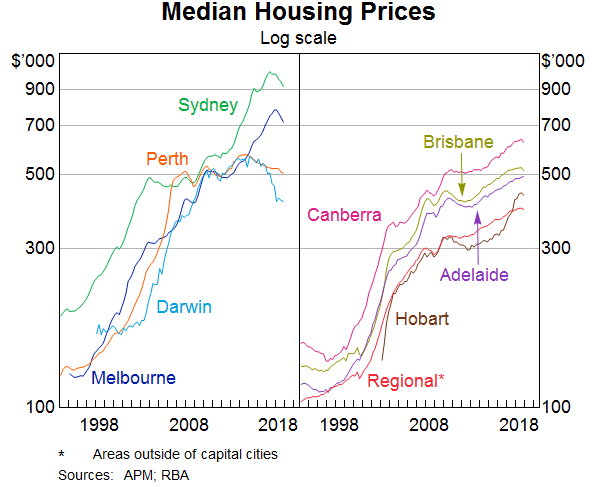
At a national level, the difference between rent inflation and house prices is stark. During the biggest part of the boom in Sydney and Melbourne house prices, national rental inflation was less than one percent. This can be seen in rental yields, which in Sydney remain at around 3% gross (for houses), despite the moderation in prices.
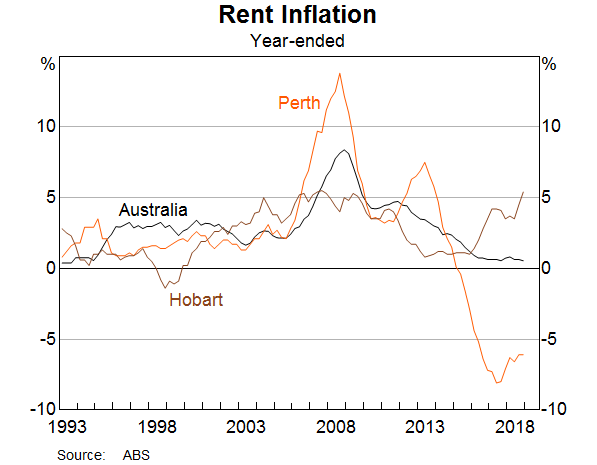
However, when you break the data down to a state level, the cyclicality become much clearer. House building does respond to population growth, but the delayed response means that new stock arrives precisely at the worst time.
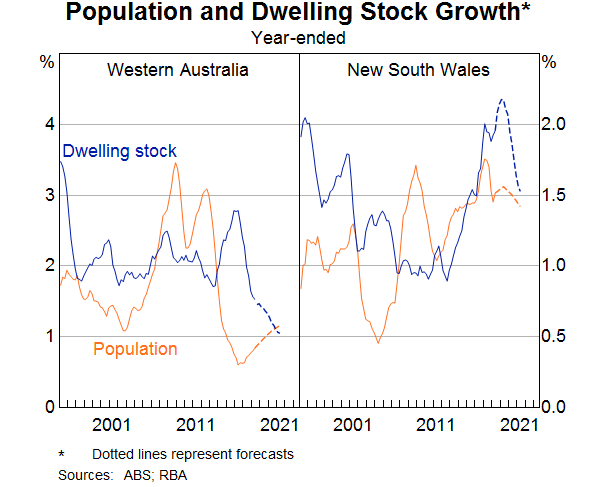
“The prospect of capital losses leads buyers to stay away or to delay purchasing. At some point, though, the lower prices draw more buyers into the market. First home owners find it easier to buy a home, investors are attracted back into the market, and trade-up buyers take the opportunity to upgrade to the home they have always wanted.”
And the source of that delayed response seems pretty clear: investors. Although it’s hard to see due to the different time-scales, the peaks in investor lending seem to line up pretty well with the peaks in dwelling stock. With investor loans plummeting, it seems like that new dwelling construction should slow, which we’ve already seen in building approvals and construction activity data. It is worth noting, however, that investors account for a relatively small proportion of new home building, preferring instead to purchase existing properties.
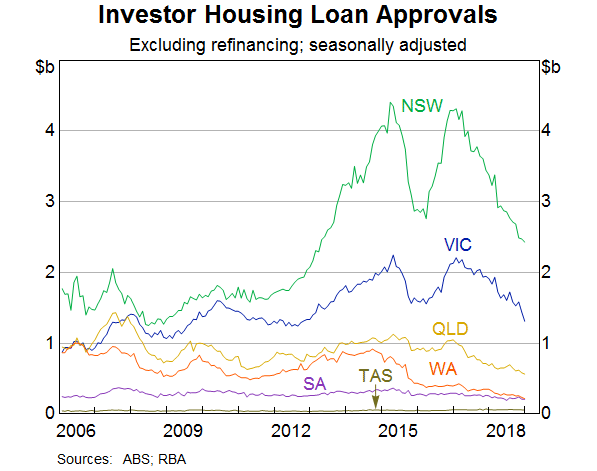
Credit growth has been well above GDP growth and wages growth for many years, and despite the recent slowdown, still remains at high levels – for owner-occupiers at least. If owner-occupied credit slows to the level of investor credit, things could get tough for the banks, who need to grow their lending books if they want to keep growing earnings.
“The evidence is that a tightening in credit supply has contributed to the slowdown in credit growth."
"The main story, though, is one of reduced demand for credit, rather than reduced supply.”
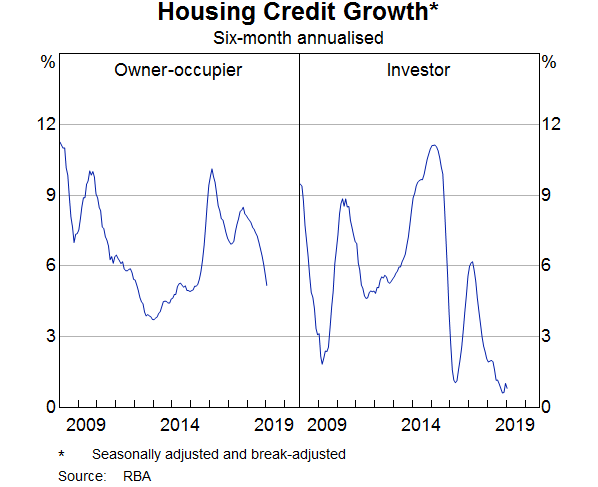
This was probably my favourite chart of the bunch and might be the most relevant one for equity investors. The second-order effects of the housing downturn can already be witnessed in the share prices of car dealerships such as Automotive Holdings Group (AHG) and AP Eagers (APE), but even some furniture retailers have begun to feel the pain, with Nick Scali (NCK) selling off throughout 2018. Could clothing and recreation follow?
This chart shows the effect that a 1% increase in household wealth (per capita) has on various industries.
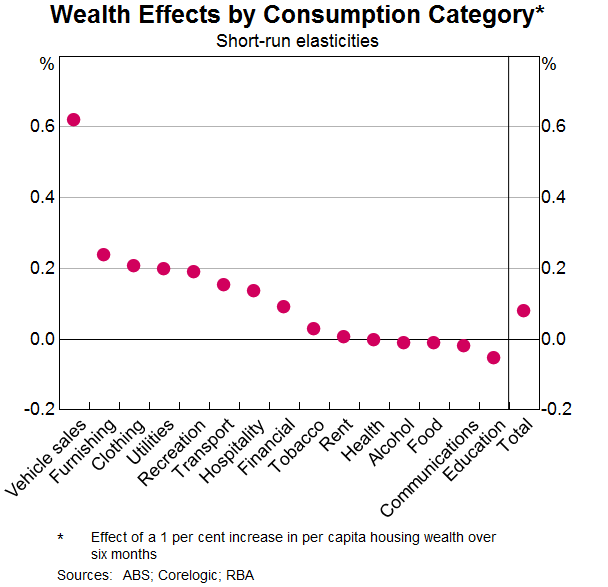
And last but not least: bad debts. One of the key factors in the Great Recession in the US was a large rise in non-performing loans. While there has been an increase in recent years, there are no signs of a crisis here yet.
“Movements in housing prices affect the economy through multiple channels. They influence consumer spending, including through the spending that occurs when people move homes.”
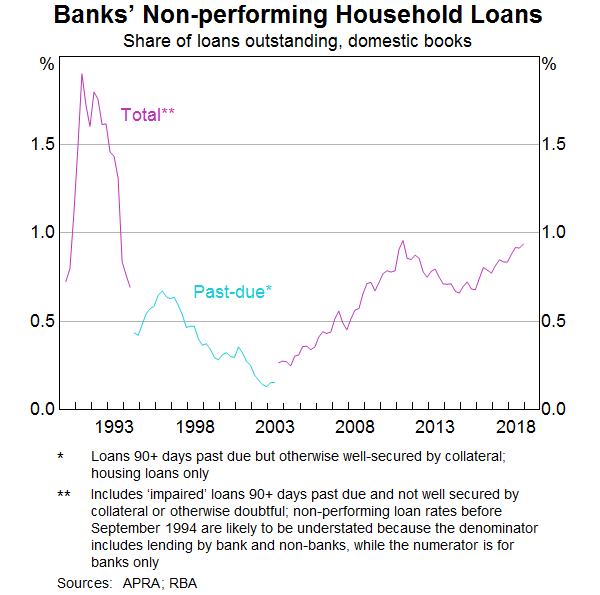
Read the RBA governor's full statement here.
Never miss an update
Stay up to date with my morning notes by hitting the 'follow' button below and you'll be notified every time I post a wire.
1 topic
3 stocks mentioned

